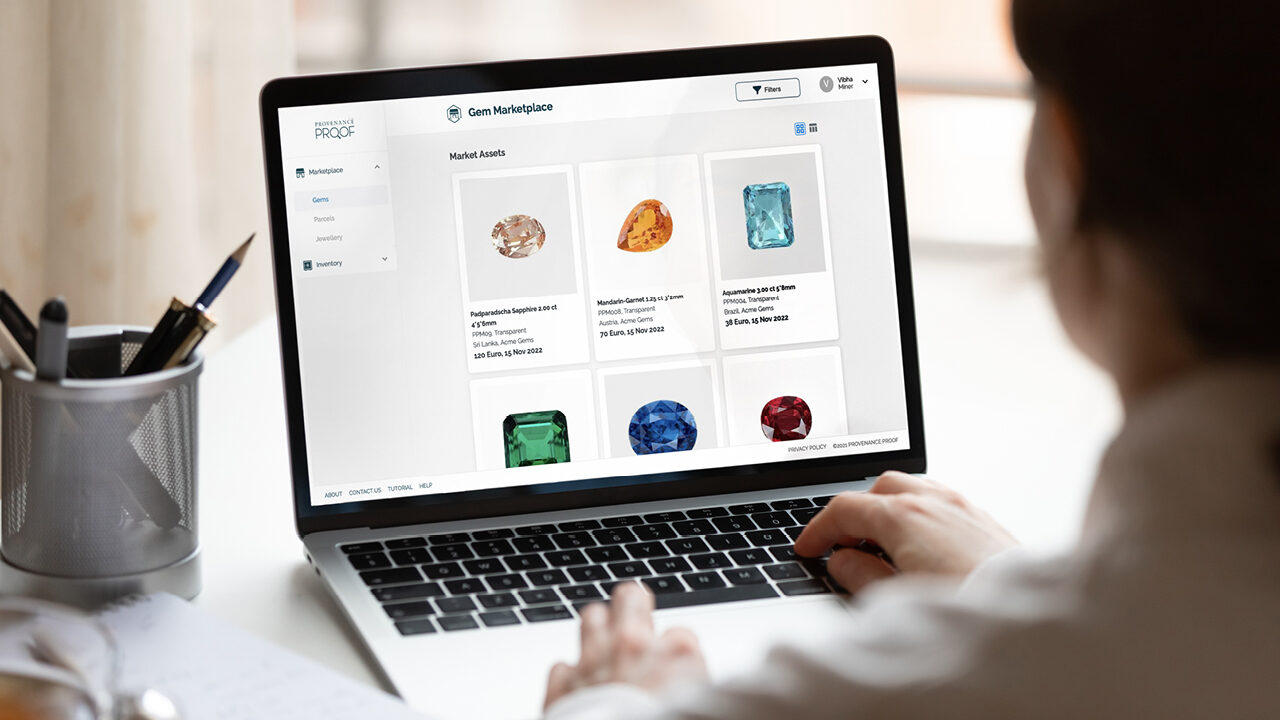Tracking progress: The Swiss-owned traceability program uses blockchain and other tools to log each stone’s journey.
Traceability is front and center for luxury-goods firms eager to assure their increasingly knowledgeable clients that their glittering, pricey wares have no links to unethical practices. One of the major players working to boost transparency in the trade is Provenance Proof. Following the successful 2019 launch of its eponymous blockchain system, the gem-tracing service introduced the Provenance Proof Marketplace (pictured) last November to connect traders and buyers directly. The digital marketplace extends the possibilities of the blockchain technology, allowing even small players to access transparently traded gemstones.
Provenance Proof operates as an independent subsidiary under the Swiss-based House of Gübelin, and its innovative tracking solutions — including the Emerald Paternity Test, which Gübelin originally launched in 2017 — are effecting change within the colored-gemstone industry.
Rock around the blockchain
Usually, when a consumer buys a gem, they “get only some basic details about [it] — for example, its authenticity, shape, weight, variety, country of origin — but are blind to the mining and processing stages,” says Provenance Proof director Klemens Link. “This is where Provenance Proof Blockchain comes into play. The immutable nature of blockchain technology makes it a robust and innovative tool for capturing the flow of information and [identifying] a gem’s journey through the supply chain.”
That information includes pictures and documents from every point along the pipeline, he adds, and end consumers can easily access their stones’ information via their smartphones.
“The platform allows users to create a digital, decentralized ledger…to trace gemstones from mine to end-consumer,” Link explains, adding that encryption keeps the process secure. “At any stage, only the party who physically holds the gem can access this information and add a new chapter to it. Designers can also add information on the process of transforming the gem into jewelry.” The result is “a neat and comprehensive timeline [that can serve as] a powerful tool at the point of sale.”
Are you my emerald?
The Emerald Paternity Test, meanwhile, is a tracking system the company made exclusively for emeralds. It consists of injecting DNA-based nanoparticles into the rough gem’s natural fissures as soon as it’s unearthed. These stay in place after cutting and polishing. Colored-stone miner Gemfields uses this system for its premium goods, which constitute about 20% of its output. Among them is the 6,225-carat Insofu emerald, which came from Gemfields’ Kagem mine in Zambia and now belongs to Chopard.
A bigger footprint
Although Provenance Proof is not the only tracking game in town, it’s attained an impressive reach. Since its 2019 launch, 700 stakeholders have registered on the Provenance Proof Blockchain — including miners, cutters, traders, retailers and gem labs — and it has processed more than five million gems. Besides offering transparency, the service “helps jewelry brands to prove compliance with new legal requirements regarding supply-chain responsibilities,” says Link.
Provenance Proof’s current focus is on expanding the scope of its efforts in source locations. “For us, it’s crucial to more strongly integrate [the artisanal and small-scale mining (ASM)] part of the supply chain — to give the smaller players access to the global markets and to make their added values visible,” he says.
Image: Gübelin



